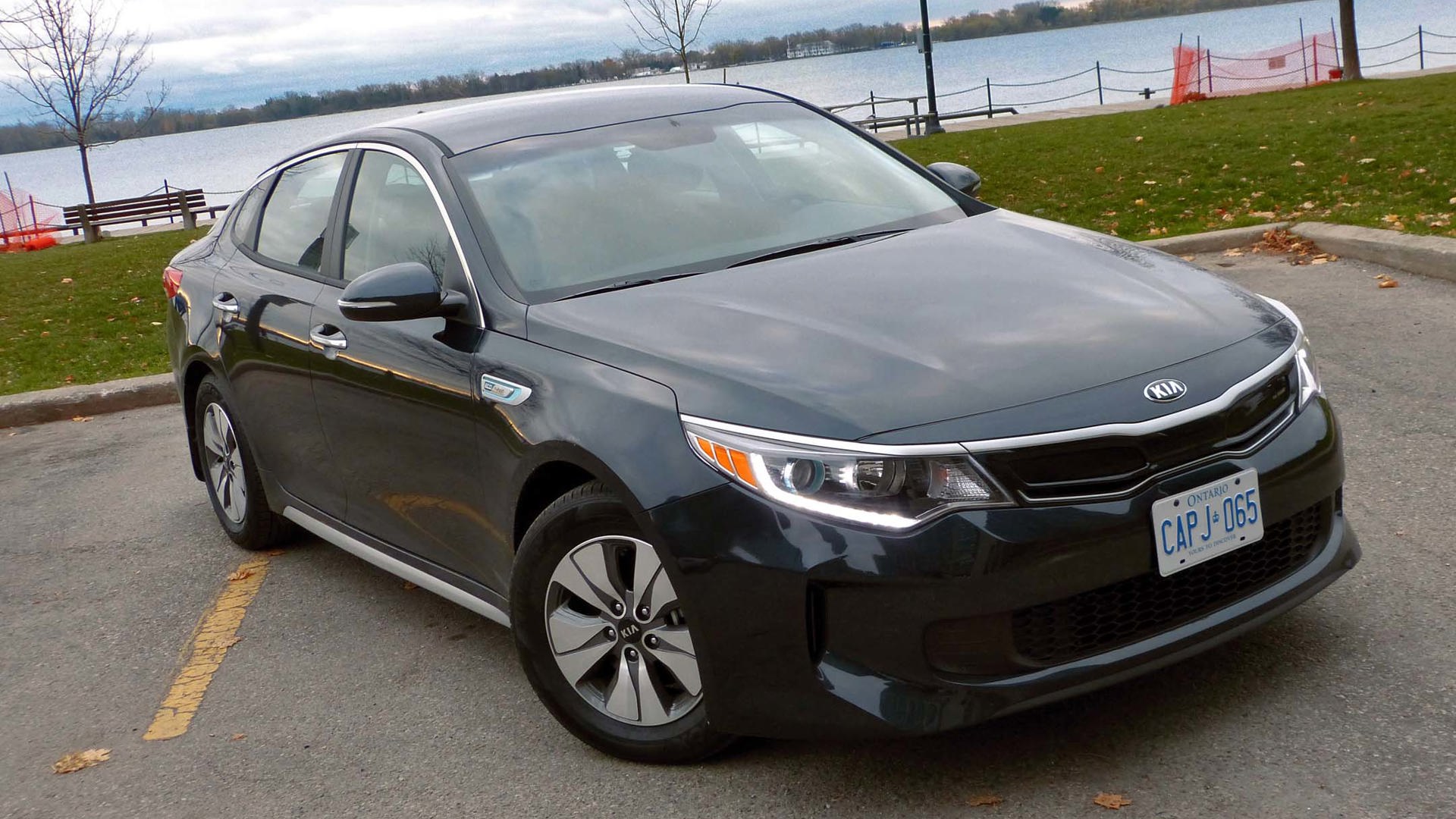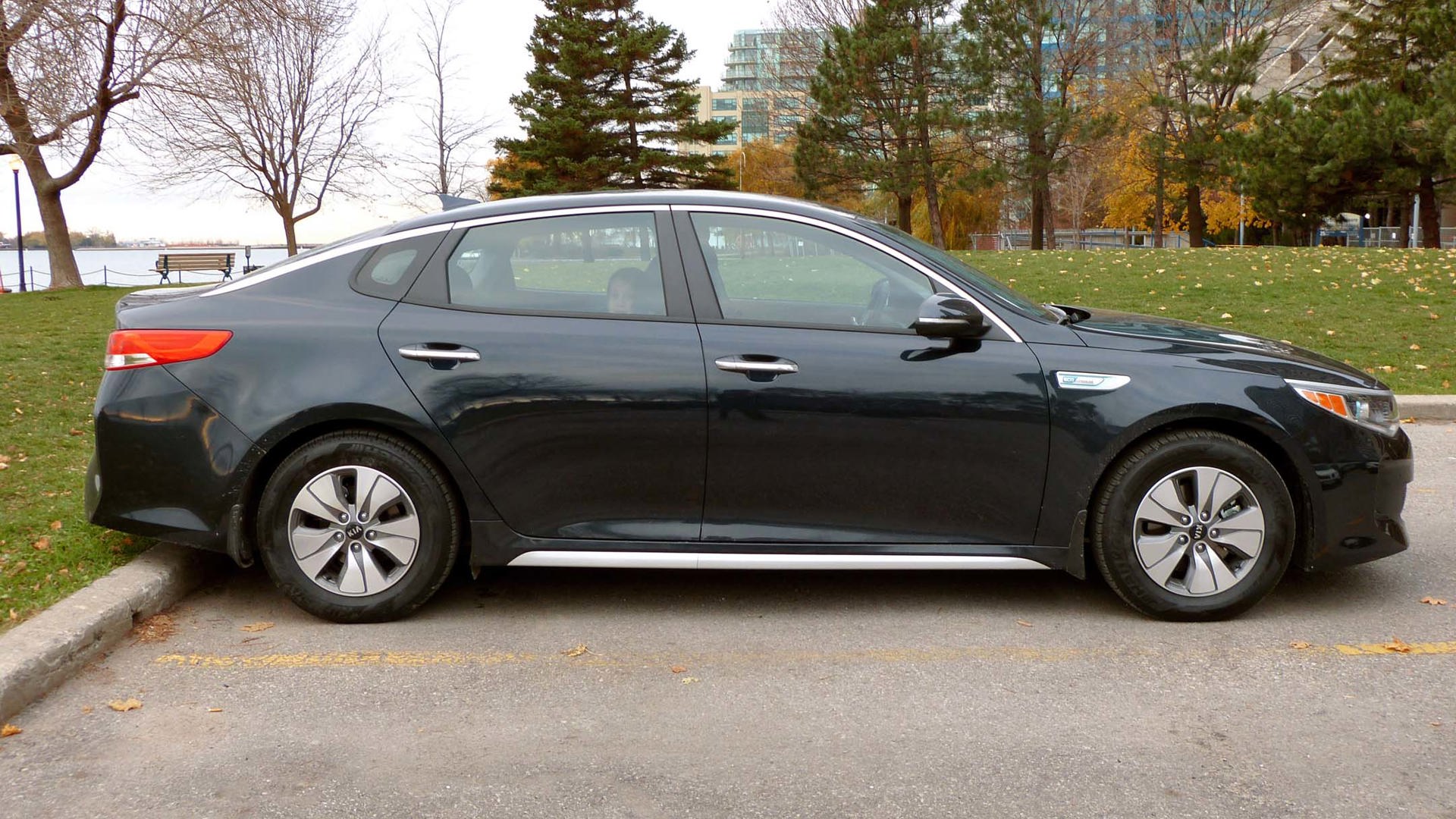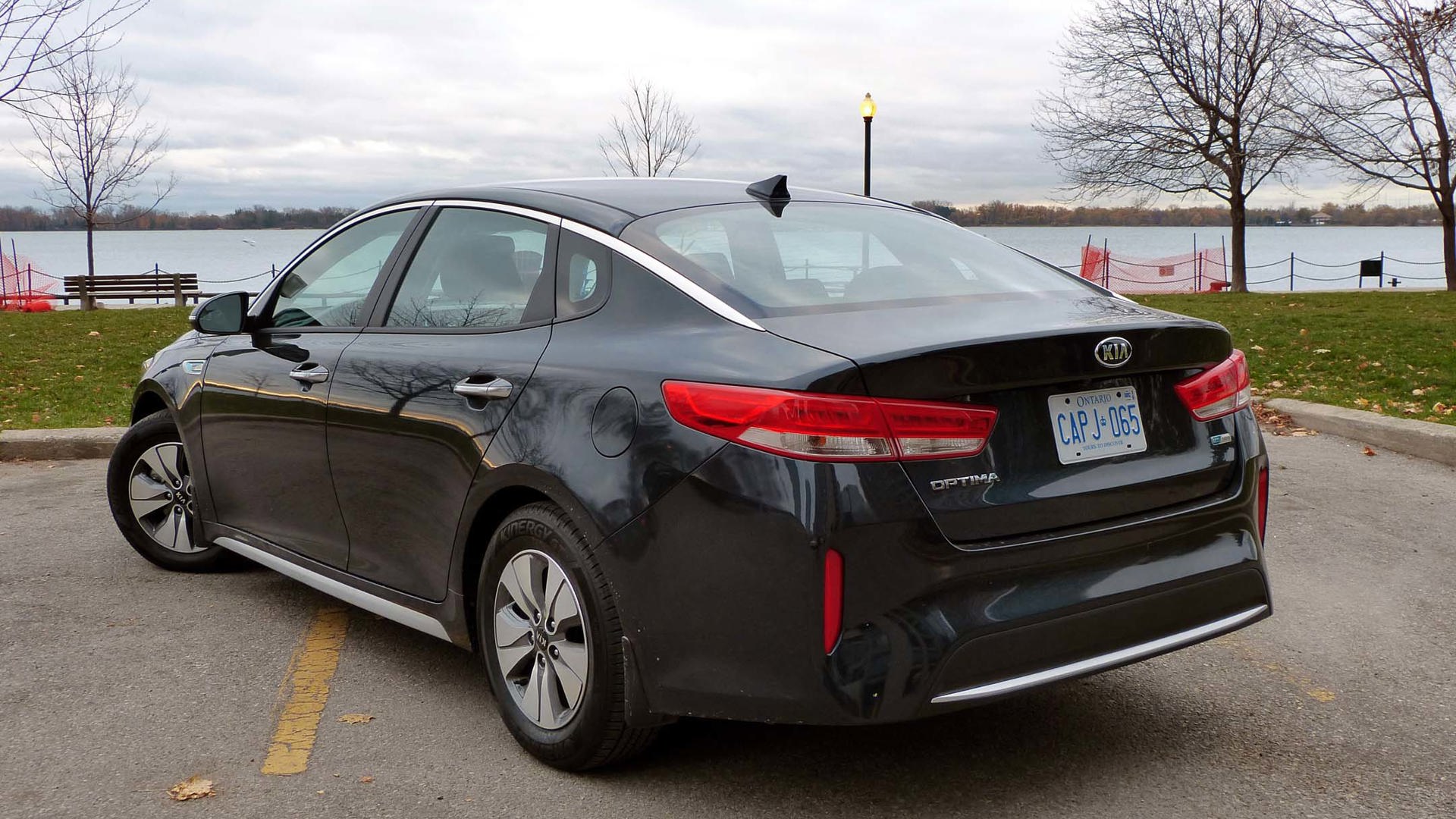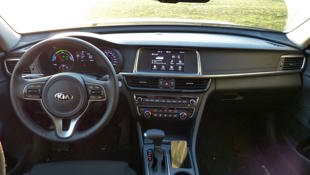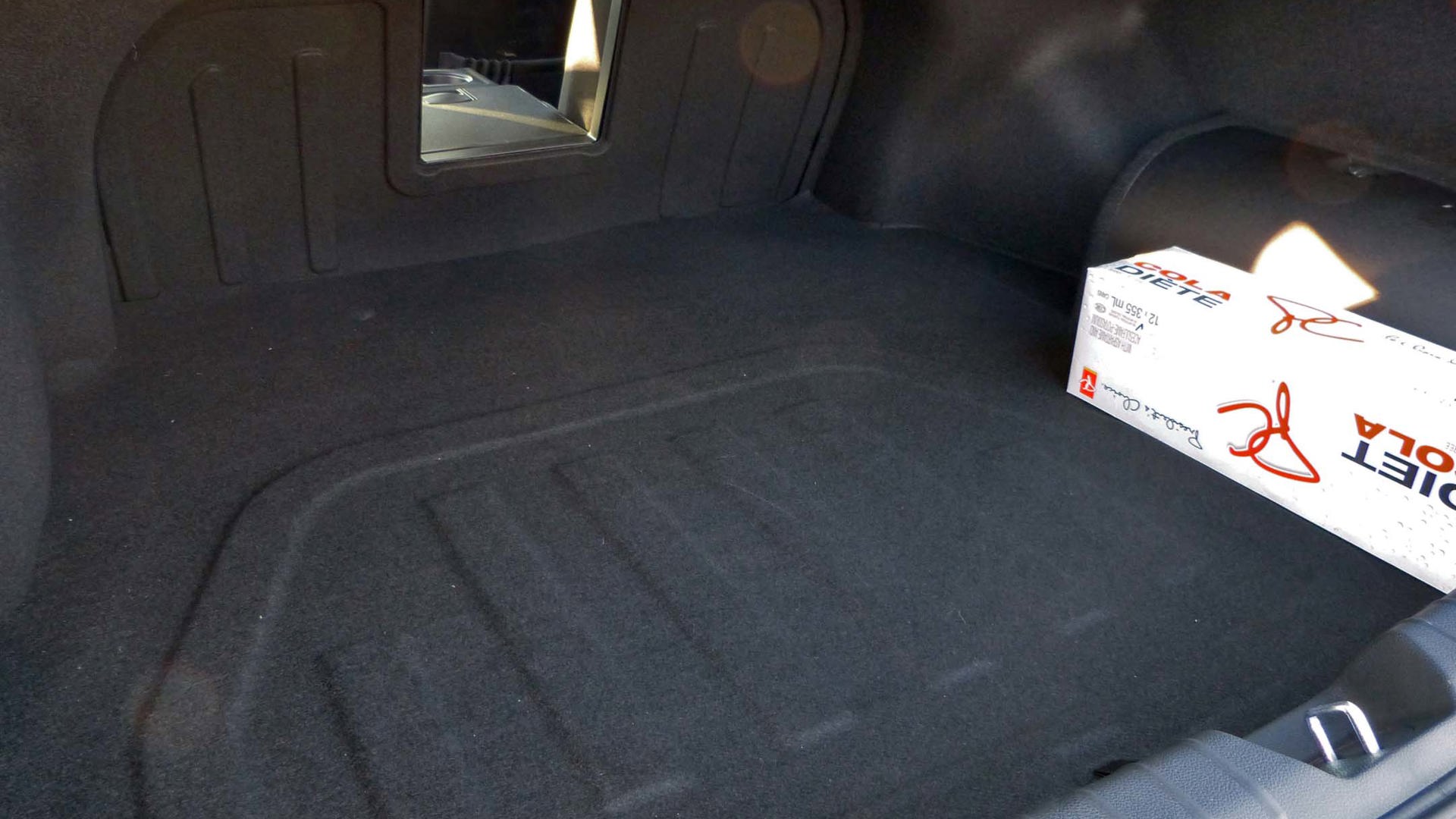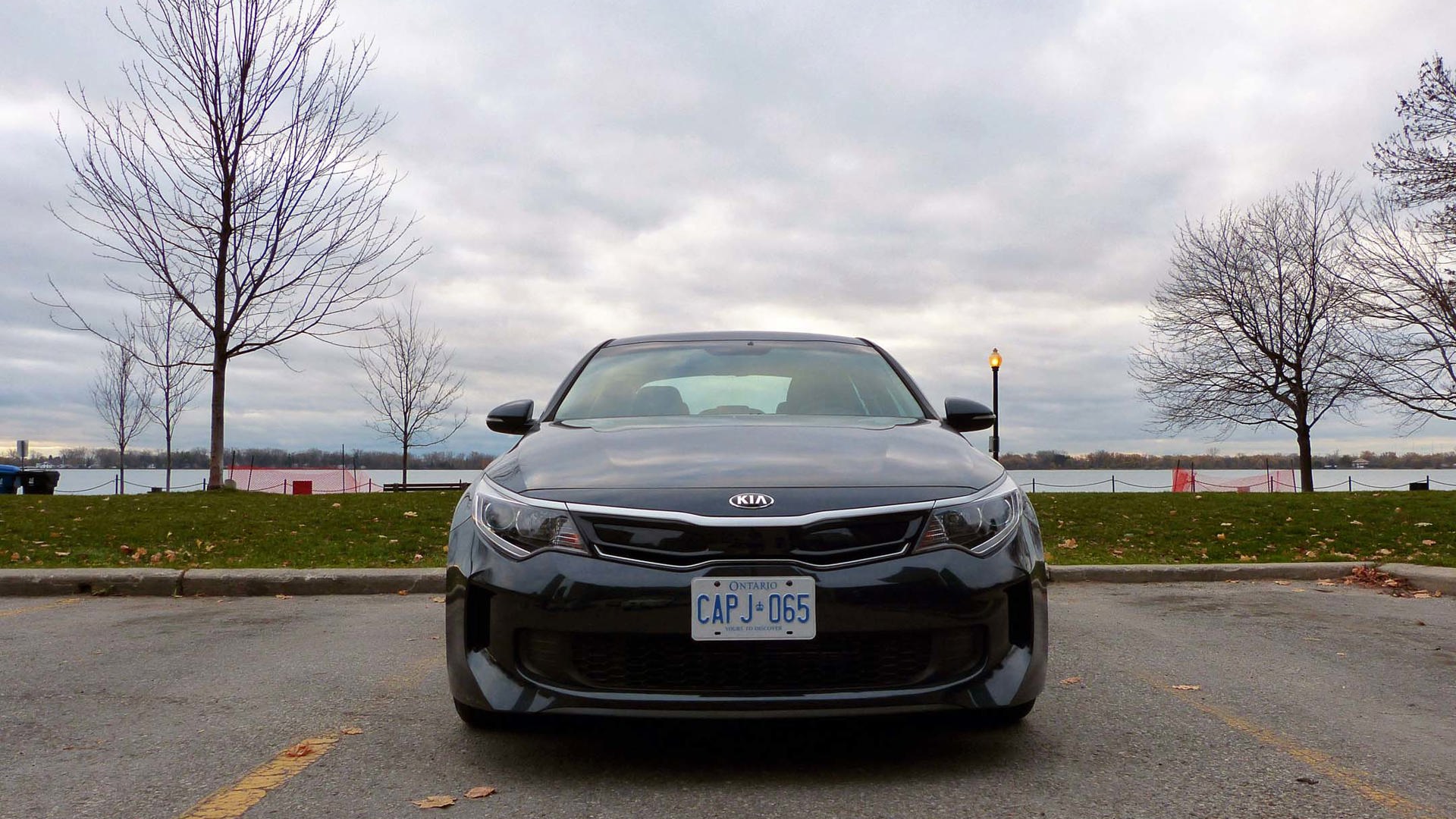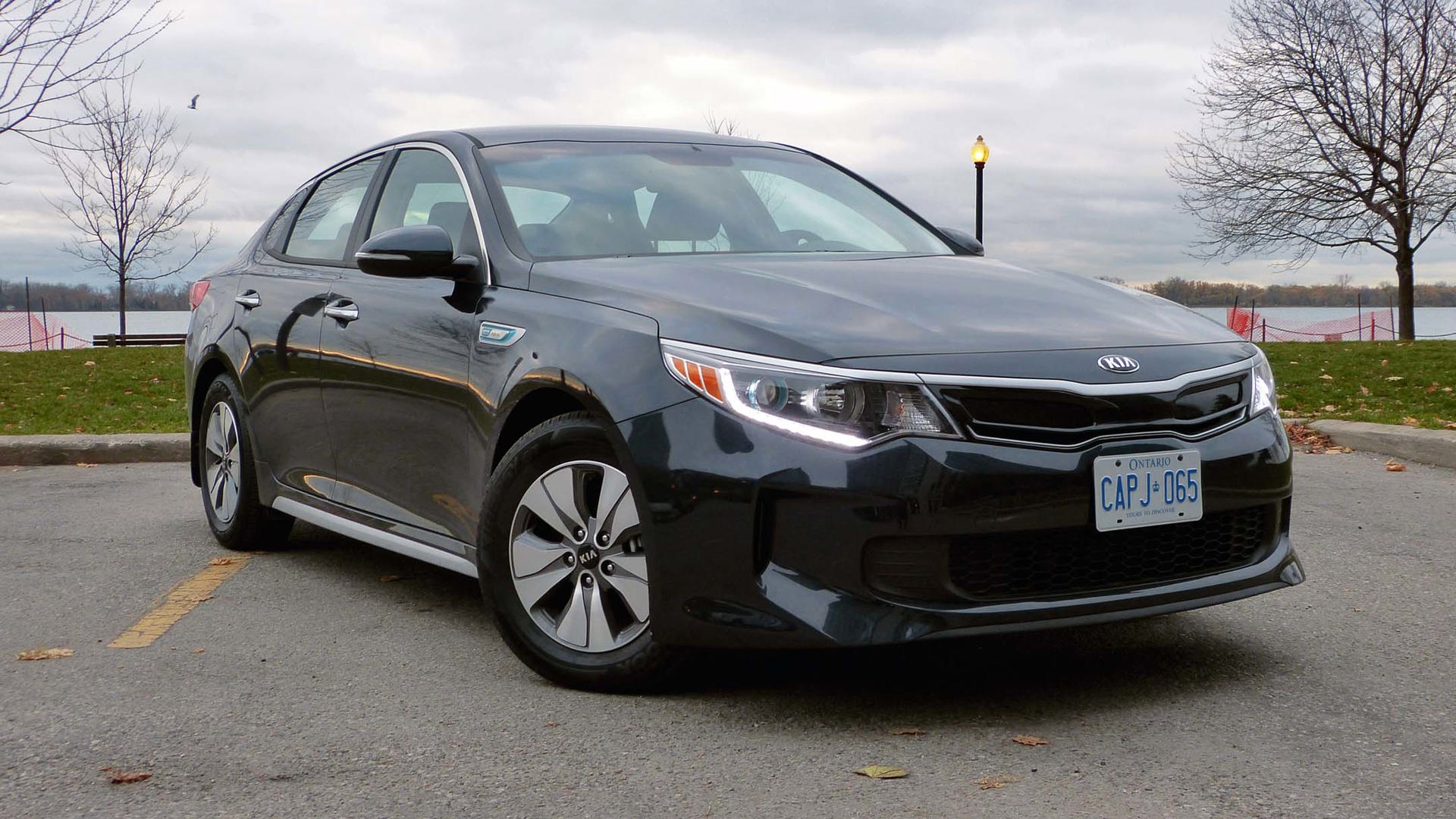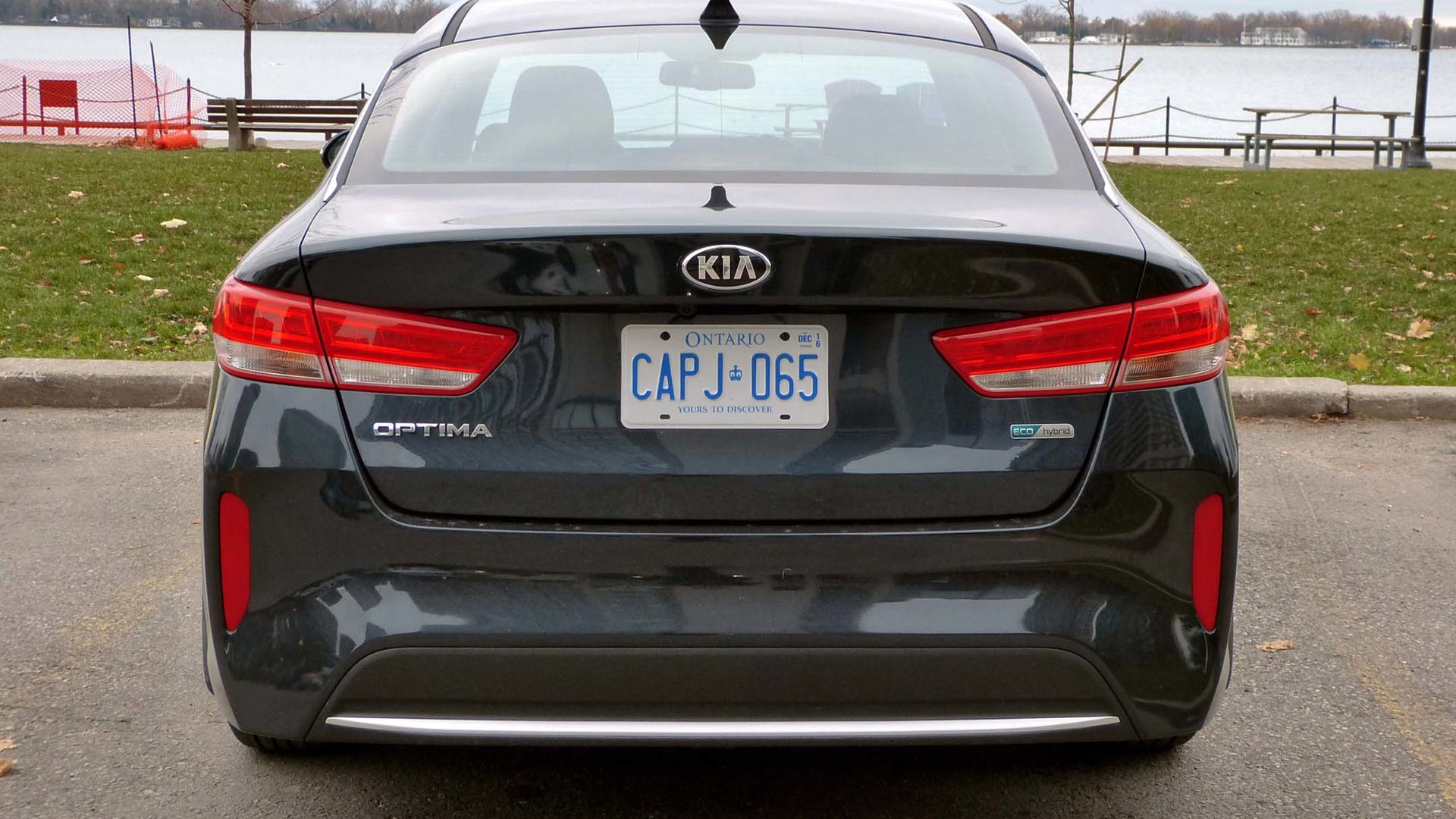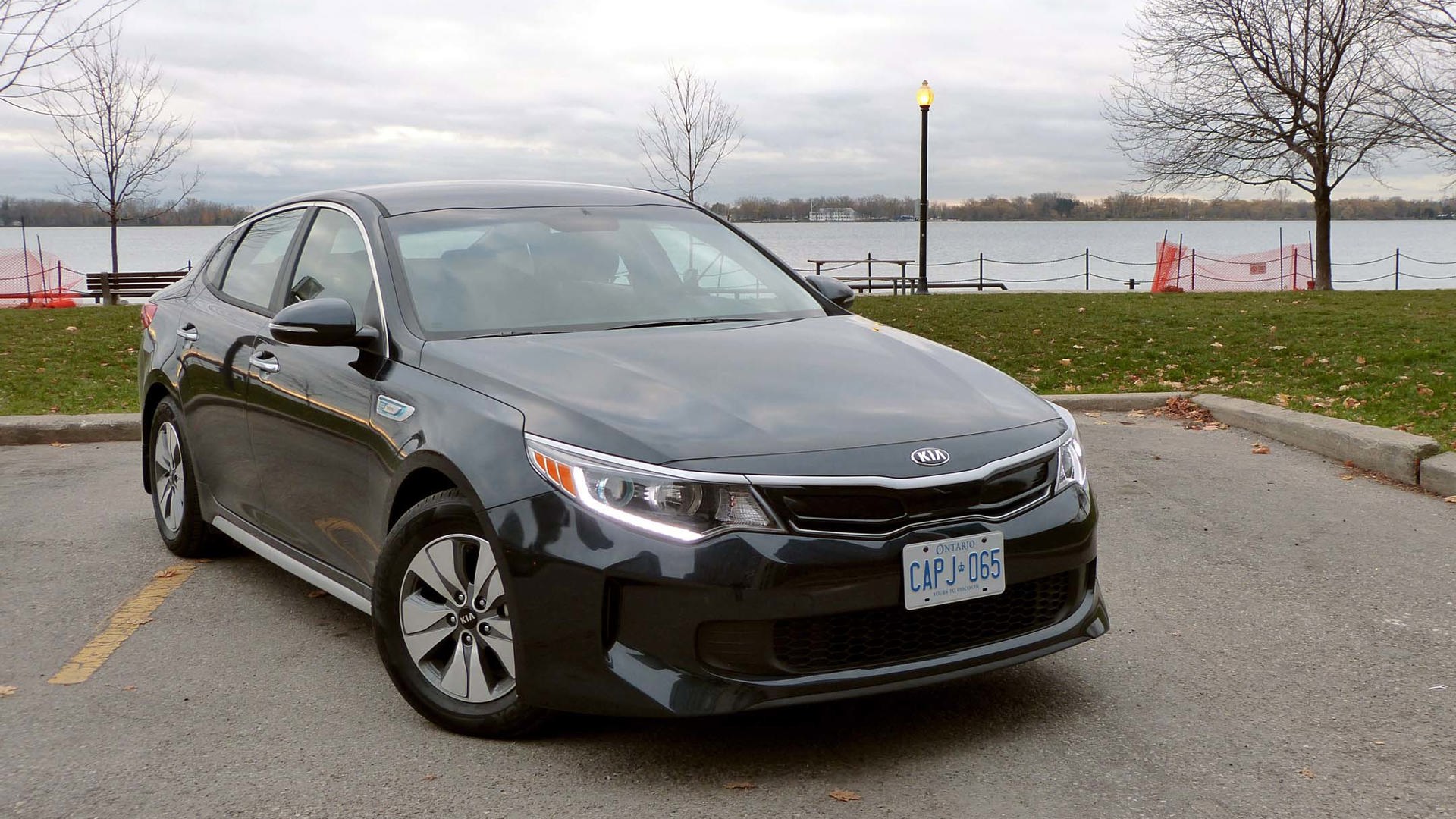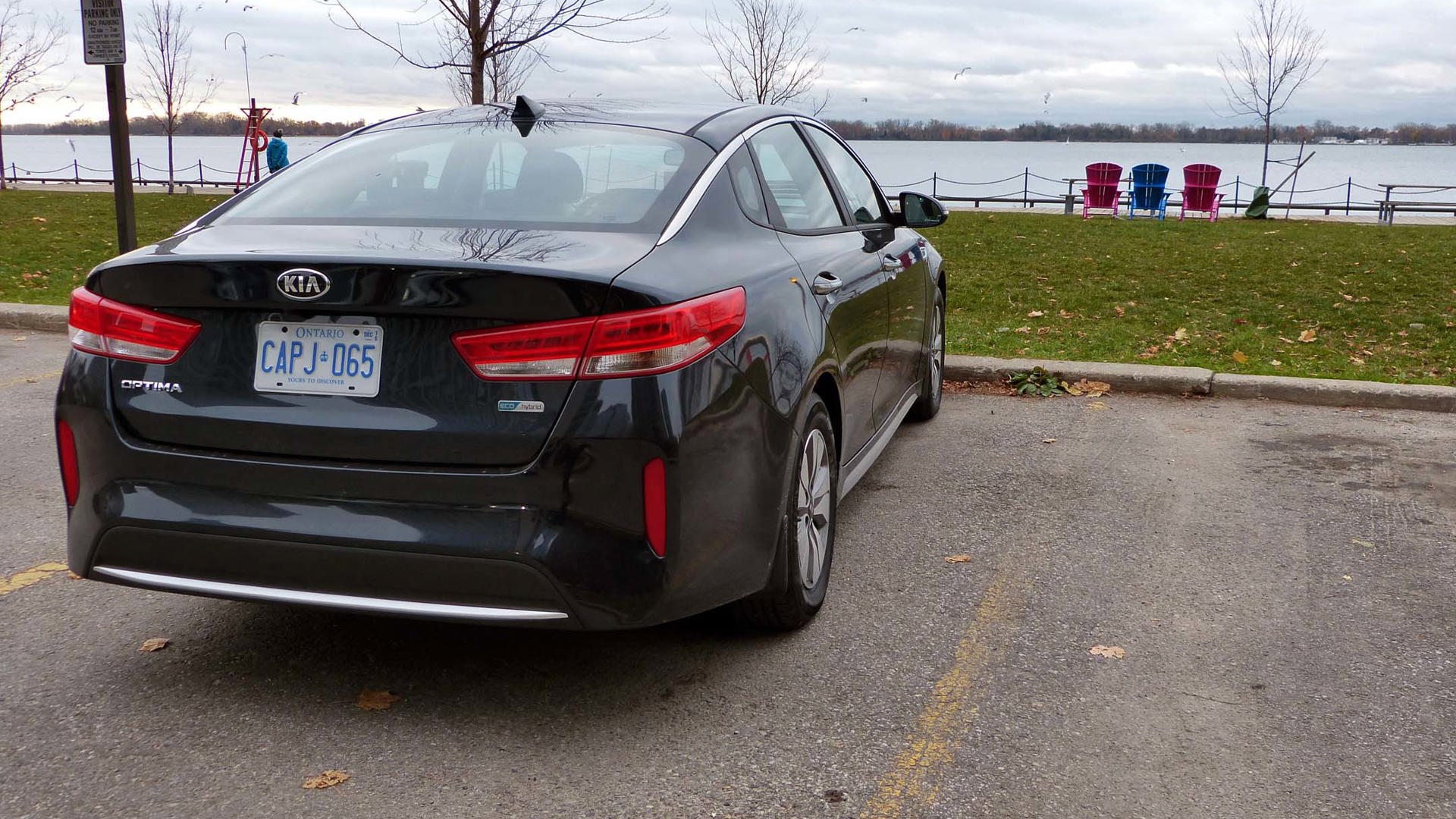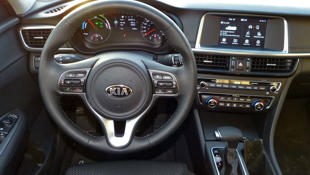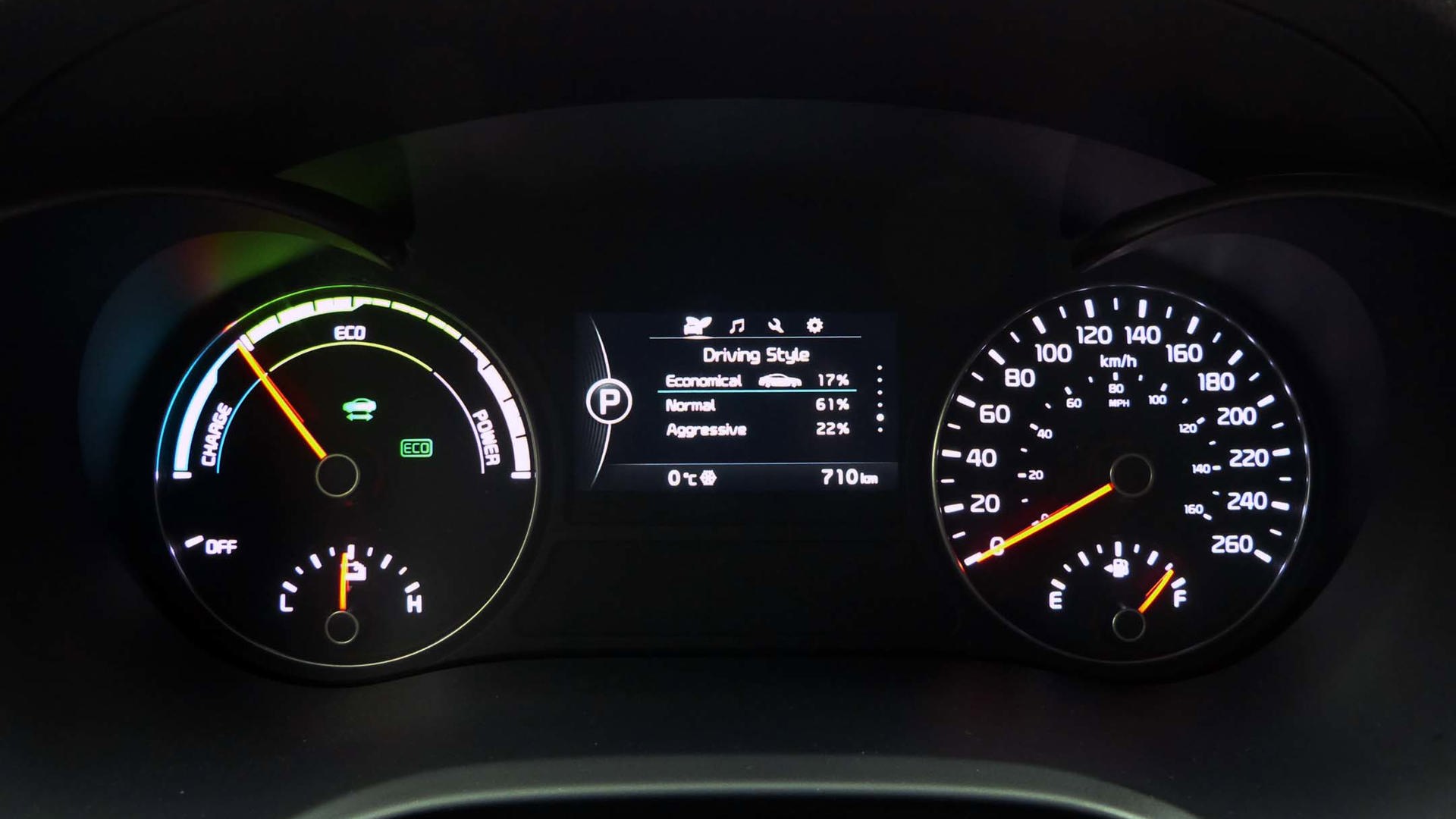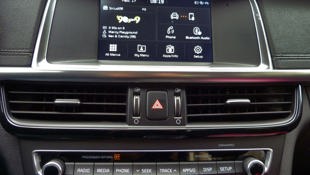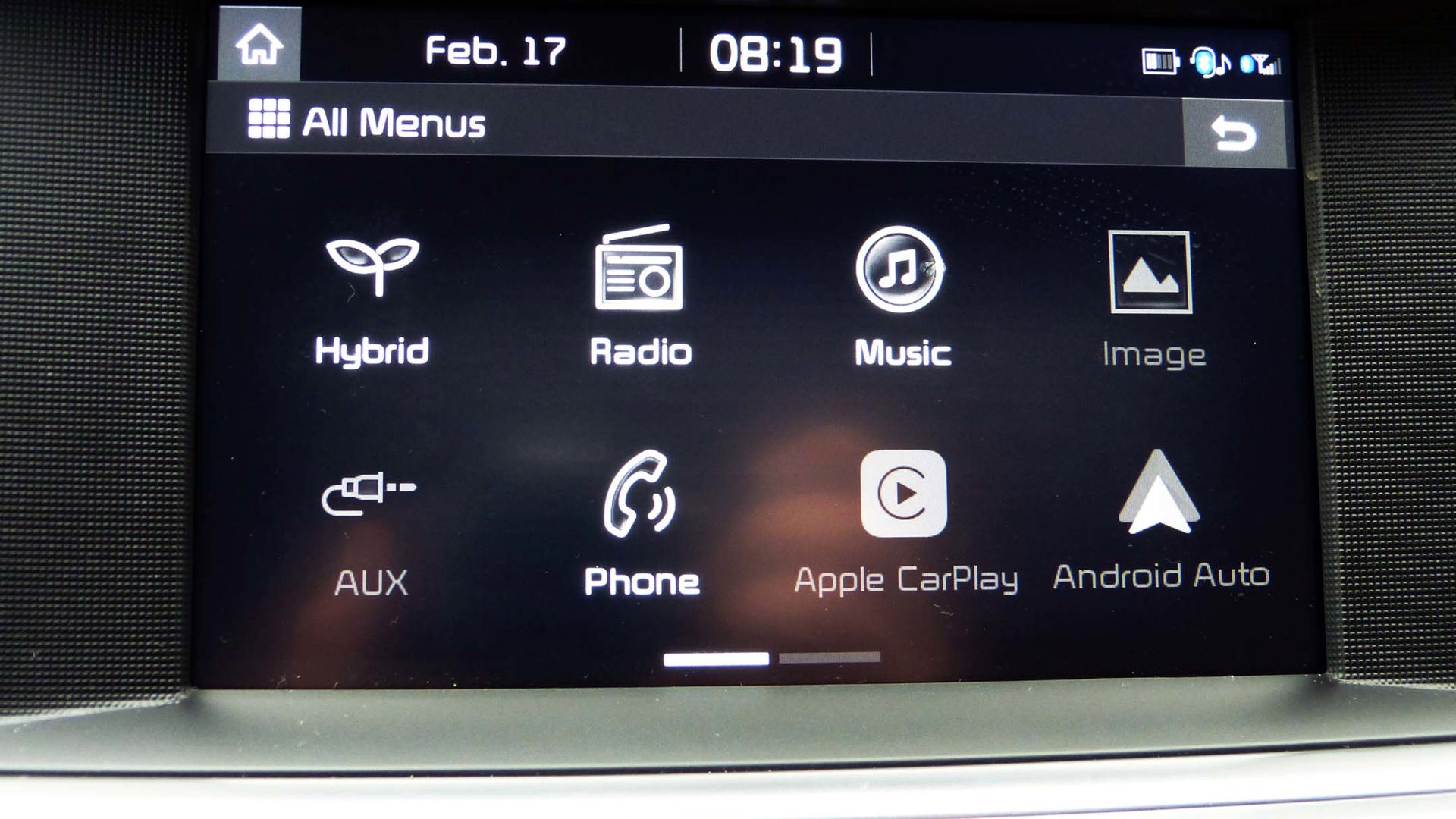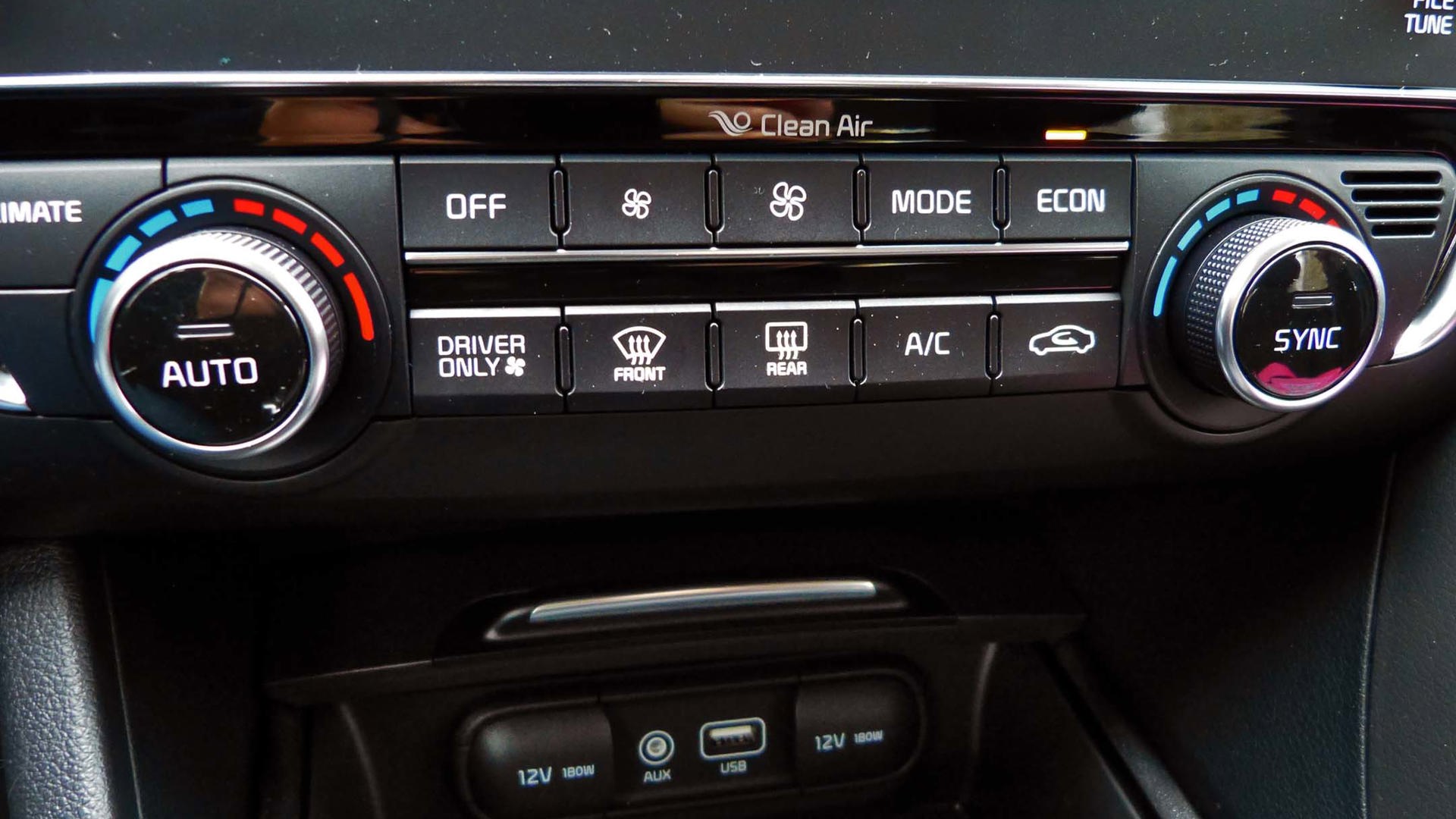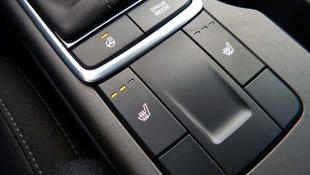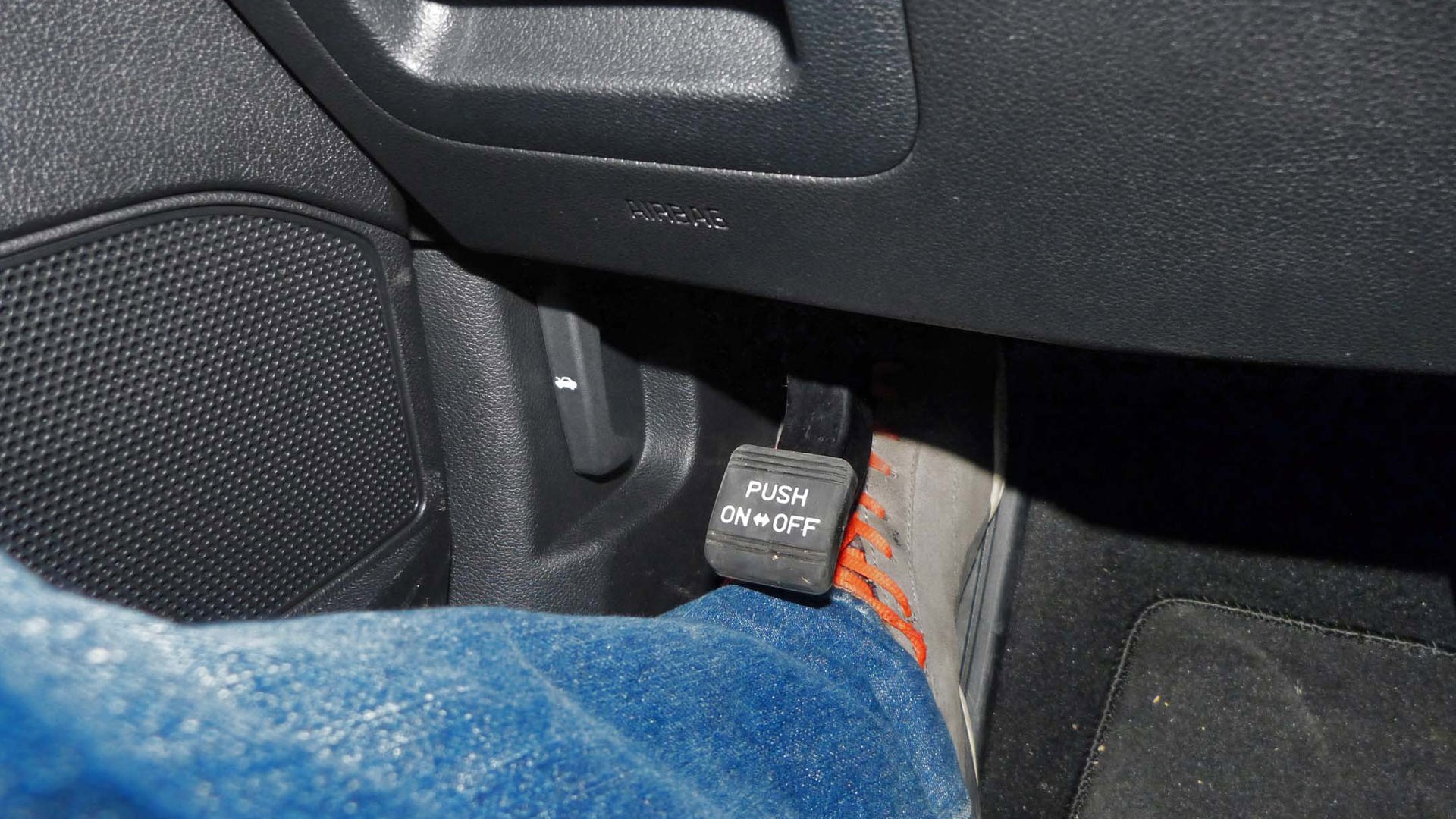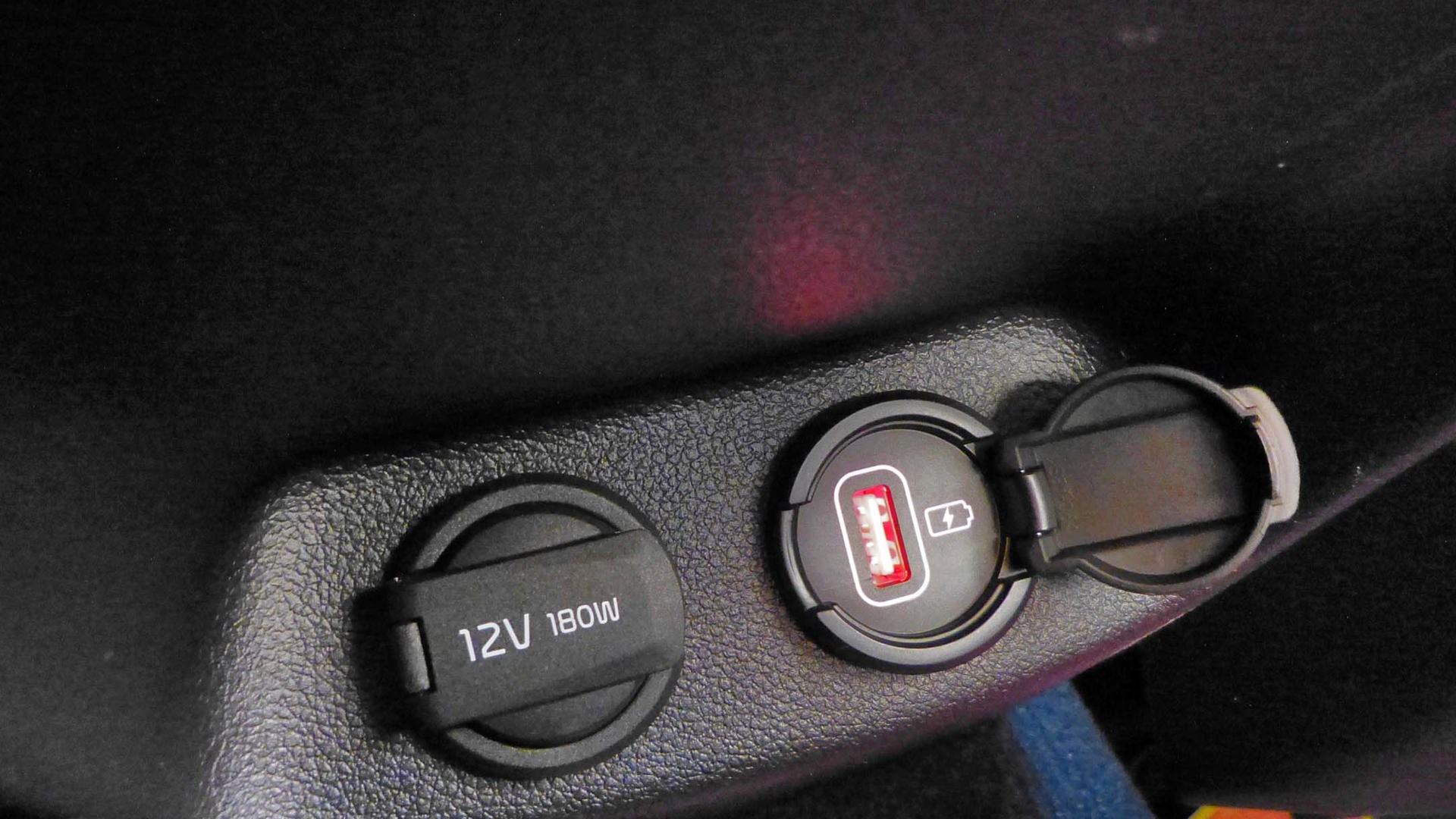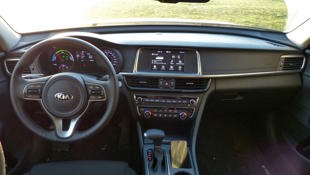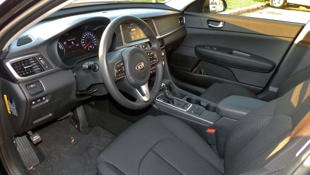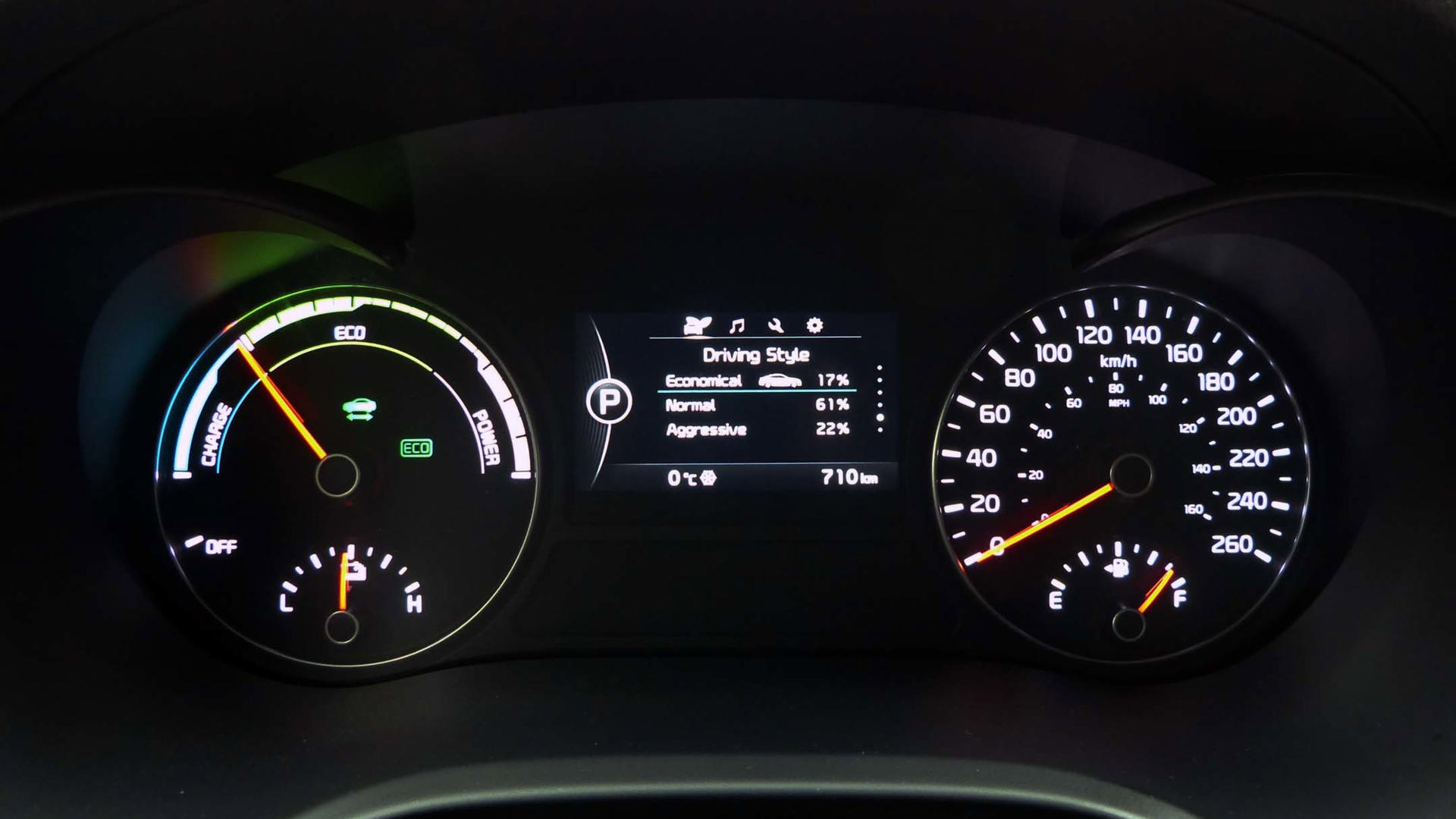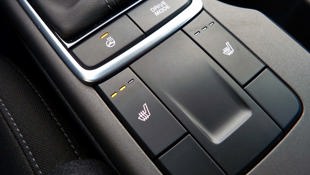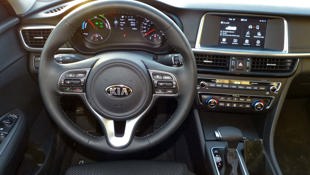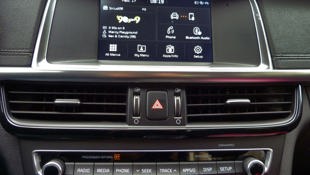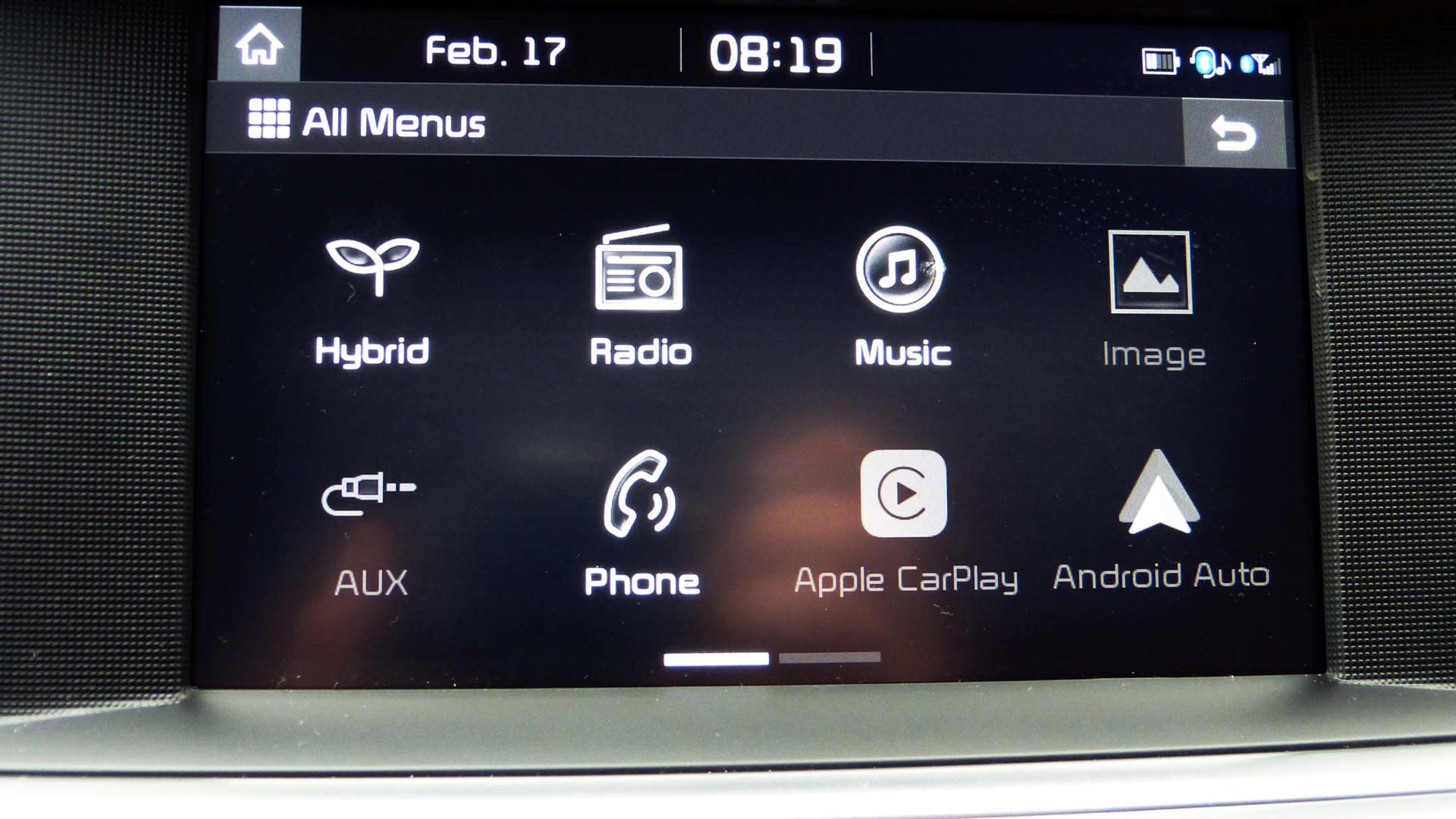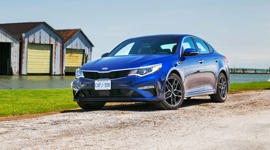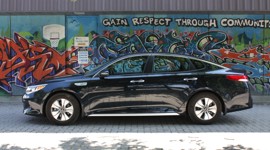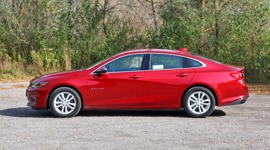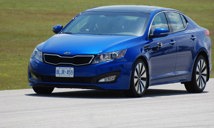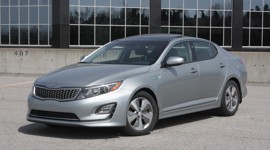 AutoTrader SCORE
AutoTrader SCORE
-
STYLING8/10
-
Safety7/10
-
PRACTICALITY7/10
-
USER-FRIENDLINESS9/10
-
FEATURES8/10
-
POWER8/10
-
COMFORT8/10
-
DRIVING FEEL9/10
-
FUEL ECONOMY8/10
-
VALUE9/10
I’m beginning to think that hybridization is the only hope of survival for mid-size sedans. Not only that, but I increasingly find that the hybrid versions of family sedans are consistently better than their conventionally powered siblings. The 2017 Kia Optima Hybrid is one such example.
In almost every measure, the Optima is better in hybrid form than the “regular” Optima.
In almost every measure, the Optima is better in hybrid form than the “regular” Optima. Obviously, there is the fuel economy issue. Official ratings for the Optima Hybrid are 6.0/5.1/5.6 L/100 km city/highway/combined. The gas-powered Optima is rated at 9.3/6.6/8.0 – or 30 percent thirstier, on paper. I ended my solely city week, in the dead of cold winter at 7.1 L/100 km, and I was hoofing it.
You might expect that the Hybrid lack guts compared to the fuel cousin, but as I discovered in my drive of the 2016 Chevrolet Malibu Hybrid, the low-end, instant-on torque offered up by the electric assistance makes for a zippier, more responsive and more city-friendly powertrain.
That’s despite there only being 140 lb-ft of torque and 192 net hp from the 2.0L four-cylinder ICE and the electric motor available to motivate the 1,655 kg chassis. I found this drivetrain slightly strained at higher speeds and the result was a moderate harshness when overtaking at over 80 km/h. The six-speed automatic feels well-matched to the engine and the shifts are smooth and even.
The drivetrain isn’t the only surprise of this package. The Optima Hybrid is thoroughly enjoyable to drive. It lacks some of the surefootedness of more sport-focused mid-size sedans but it has a compliant, communicative ride that strikes a good balance between agile and dull.
Another benefit of the hybrid powertrain is a blanked out grill and some aerodynamic aids and badging that help further elevate the already-handsome Optima. The 16-inch alloys on this base-model hybrid are neat little units too, with clear design nods to the eco ambitions of the car.
Out back you’ll find a truly cavernous, 380 L boot that is not impeded by the battery at all, though the gas version’s trunk is slightly larger at 450 L. This means you get a fold-down rear seat – but not a split-fold. You need to move up to the EX trim for that. You do get an enormous ski pass through my daughter claimed she could climb through. I didn’t let her try. She wasn’t happy.
One gripe I have to address is the parking brake position. I am no fan of foot-operated parking brakes at the best of times. But with my foot planted on the dead pedal in the Optima my shin kept catching the parking brake. I can only imagine how much damage that would do in a crash and the brake lever itself is not a forgiving unit. Even a minor fender bender would skin your shin in a painful fashion as your leg flies forward.
Being the base LX model Optima Hybrid, our tester was also without a sunroof. To get Kia’s excellent panoramic sunroof you need to step up $3,700 to the $33,595 EX trim. That trim also adds blind-spot detection, rear cross-traffic alert, parking sensors, 17-inch alloys and sound-reducing front door glass (which would help with the higher-than-normal wind noise I experienced). You’ll also get leather seats, rear door pull-up shades, door-sill scuff plates, rain-sensing wipers and split-fold rear seats.
If you make the further $5,500 leap up to the EX Premium trim you’ll be rewarded with autonomous emergency braking, a 270-degree camera system, lane-departure warning, tire-pressure monitoring, 10-way power passenger seat, cooled front seats, heated rears, 8.0-inch navigation, Harman Kardon nine-speaker audio, wireless cell phone charger, adaptive cruise, electric parking brake, LED headlights and automatic high beam control.
Frankly, I don’t see the need. The LX already has my most sort-after features, like a heated steering wheel and Android Auto/Apple CarPlay. The EX might tempt me with the sunroof but the rest I would be happy to leave behind. The standard 7.0-inch UVO3 infotainment system is really very good. It includes Kia’s clever automatic recording function, which records your six favourite Sirius XM stations from the moment you start the car.
It also includes a groovy little graphic that demonstrates the flow of energy between the wheels, internal combustion engine and electric motor as well as a tree that shows how “green” you are driving by illuminating the leaves. More leaves = super green, fewer = “You monster!”
Kia owes Ford and Toyota a beer for these graphics, but they’re still cool, just not original.
The gauges and TFT screen are likewise informative and rich in graphics as well as being easy to use. Kia’s systems are among the most intuitive and user friendly on the market. You’ll find plenty of USB ports for front and rear passengers alike, as well as 12 V outlets. I’d have liked a larger console bin.
Kia’s steering wheels are typically stylish, thick and feel nice in the hand. This one is no exception. The cloth seats are firm and supportive with a good level of bolstering making them more than adequate to carry my portly chassis even in soul-sapping, hours-long traffic jams. In those traffic jams I got to experience the transition from EV to fuel mode repeatedly. I found it a surprisingly gentle transition and occasionally didn’t realize I was running the ICE unless the graphic showed me.
The three drive modes available (Sport, Eco, Normal) only change the transmission/throttle mapping and the steering effort. I like sport for the heavier-feeling steering and the sharper response. Your mileage may vary.
I really did enjoy the Optima. I enjoy the styling and the interior is made of nice materials and feels – at the risk of sounding like one of those “real people – honest” adverts – upscale. The balance of a fuel-efficient drivetrain at an accessible entry price with well-considered features, plus the fact the Optima Hybrid is just plain pleasant to drive, adds up to a compelling choice for a city-dwelling family like mine.
| Engine Displacement | 2.0L |
|---|---|
| Engine Cylinders | 4 + electric motor |
| Peak Horsepower | 192 |
| Peak Torque | 140 |
| Fuel Economy | 6.0/5.1/5.6 L/100 km cty/hwy/cmb |
| Cargo Space | 380 L |
| Model Tested | 2017 Kia Optima Hybrid LX |
| Base Price | $29,895 |
| A/C Tax | $100 |
| Destination Fee | $1,760 |
| Price as Tested | $31,755 |
|
Optional Equipment
$200 – Blue colour $200
|
|
